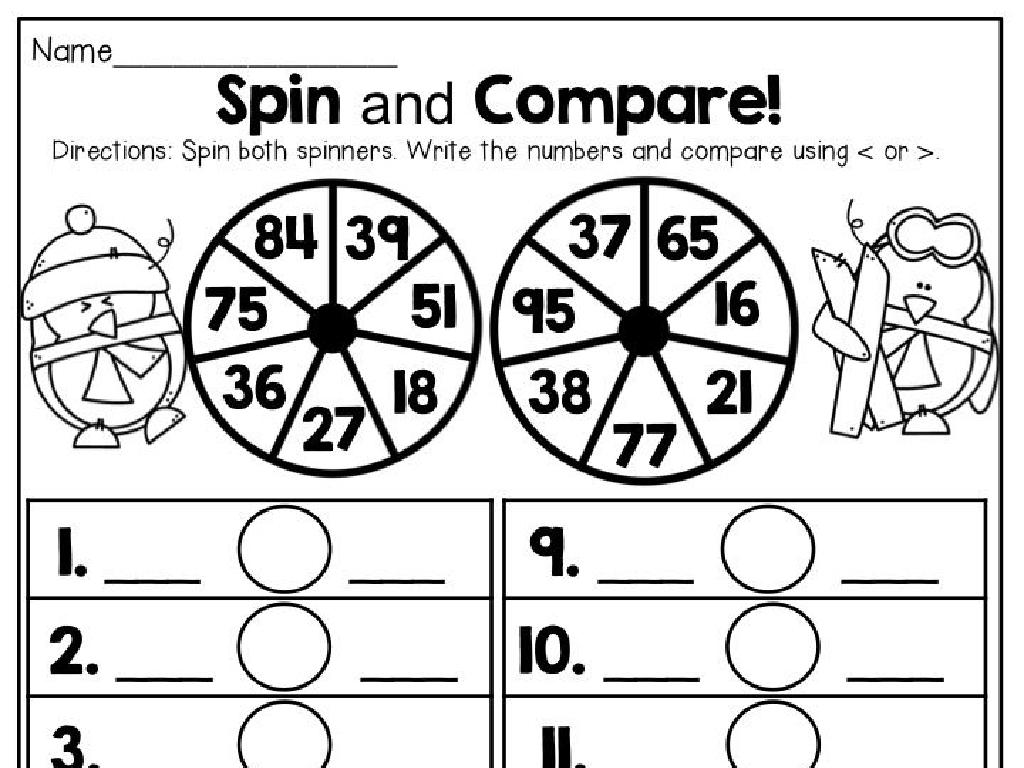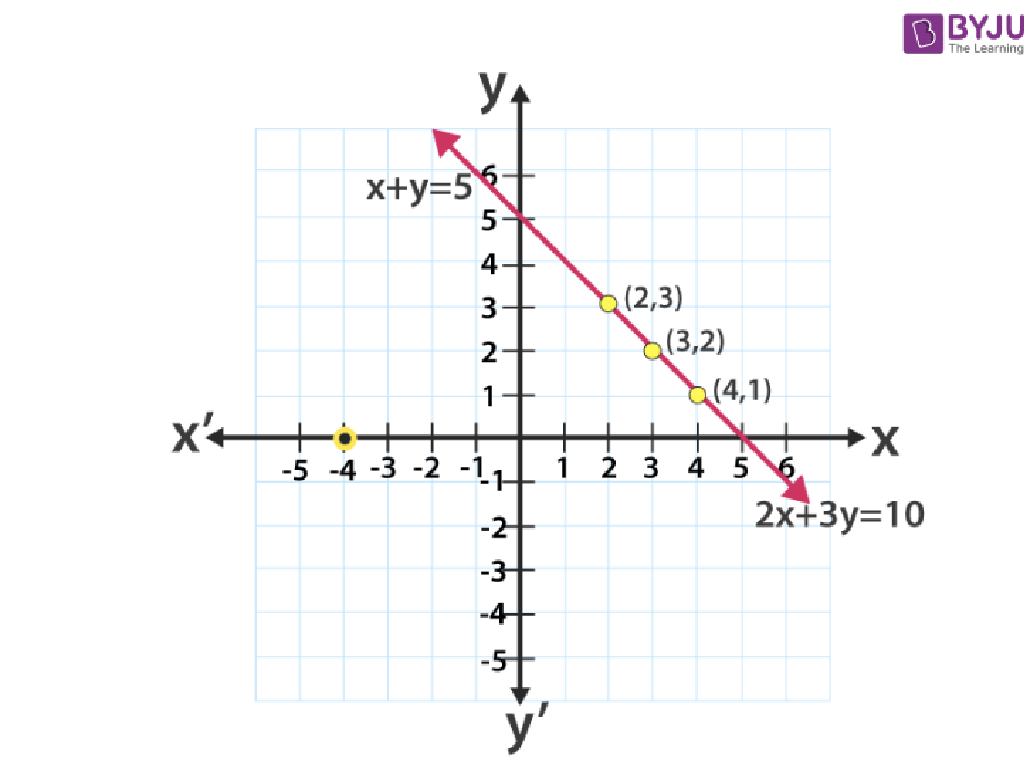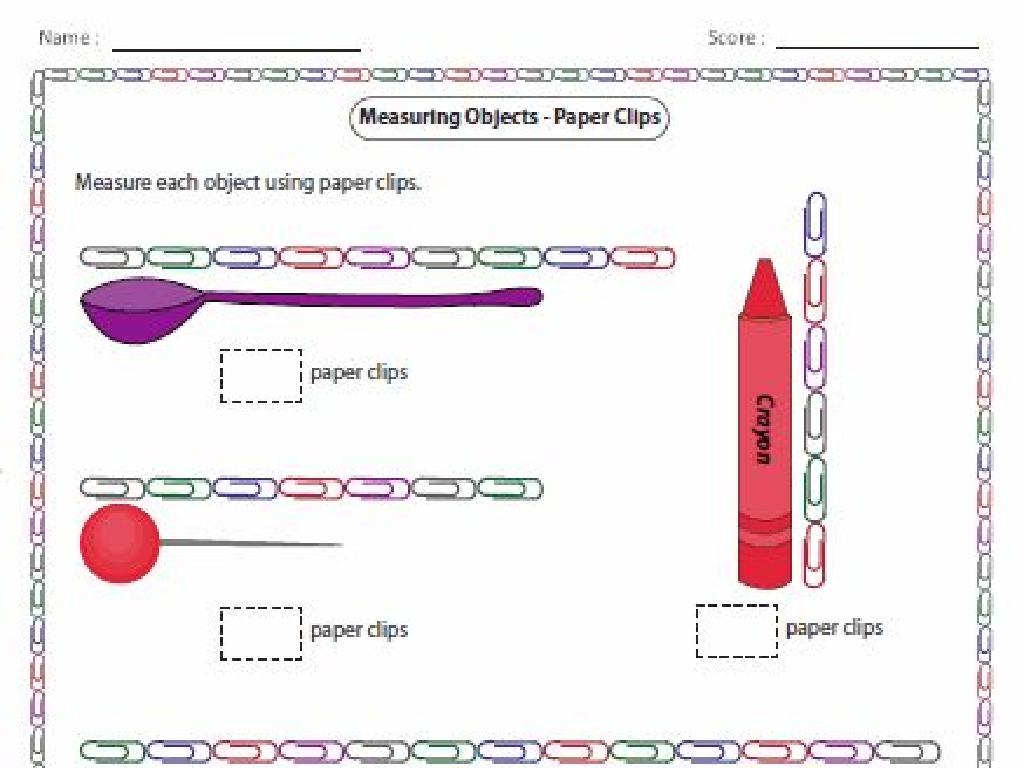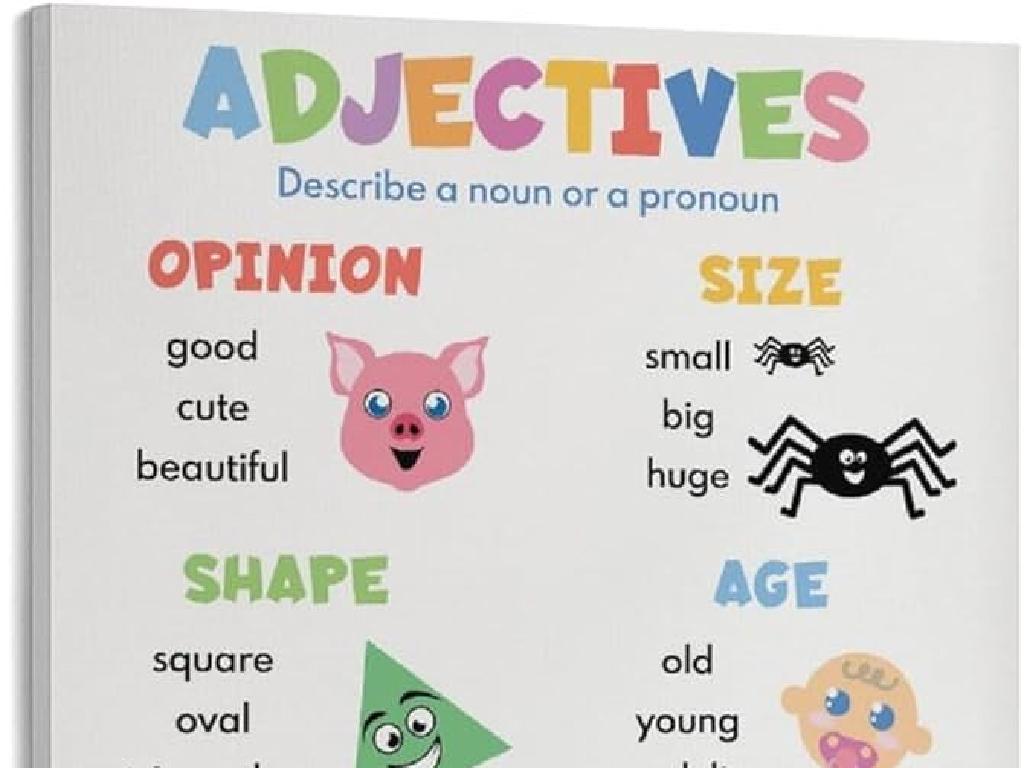Area Of Triangles
Subject: Math
Grade: Sixth grade
Topic: Perimeter And Area
Please LOG IN to download the presentation. Access is available to registered users only.
View More Content
Exploring the Area of Triangles
– Difference between perimeter and area
– Perimeter is the boundary length; area is the space inside.
– Recap: Perimeter of shapes
– Perimeter is the sum of all sides of a shape.
– Today’s focus: Triangle area
– Understanding how to calculate the space inside a triangle.
– Formula: Area = 1/2 * base * height
– Use this formula to calculate the triangle’s area.
|
Begin with a brief discussion on the difference between perimeter and area to set the stage for today’s lesson. Recap the concept of perimeter as a foundation, ensuring students remember how to calculate it for various shapes. Shift the focus to the area of triangles, emphasizing that while perimeter is about the boundary, area deals with the space inside. Introduce the formula for the area of a triangle and explain each component (base and height). Provide examples of different triangles (equilateral, isosceles, and scalene) and demonstrate how to apply the formula. Encourage students to think about how changing the base and height affects the area. Prepare to engage students with practice problems where they will apply this formula.
Understanding the Area of Triangles
– Area: size of a surface
– Think of area as how much paint you need for a wall
– Measured in square units
– Units like square inches (in²) or square meters (m²)
– Real-life importance of area
– Used in flooring, painting, and land measurement
– Area calculation for triangles
– For triangles, area = 1/2 * base * height
|
This slide introduces the concept of area as it relates to triangles, a fundamental aspect of geometry. Area is the measure of how much surface an object has and is expressed in square units. Understanding area is crucial for various real-life applications such as determining the amount of material needed for construction or crafts. Emphasize the practicality of knowing how to calculate the area, especially for irregular shapes like triangles. The formula for the area of a triangle (1/2 * base * height) should be highlighted as a key takeaway. Encourage students to think of examples where they might need to calculate the area in their daily lives.
Triangles Everywhere!
– Triangles in our environment
– Types: Equilateral, Isosceles, Scalene
– Equilateral: all sides equal, Isosceles: two sides equal, Scalene: no sides equal
– Classroom triangle hunt activity
– Find and draw triangles in the classroom
– Drawing and sharing findings
– Share your drawings with the class
|
This slide aims to engage students with the concept of triangles in a fun and interactive way. Start by discussing how triangles are present in various objects around us, from architectural structures to everyday items. Introduce the three types of triangles: equilateral, isosceles, and scalene, highlighting their unique properties. For the activity, have students look around the classroom to spot different triangles and draw them on paper. Encourage creativity and observation skills. After the activity, create a gallery walk where students can display their drawings and discuss the types of triangles they found. This will help reinforce their understanding of triangle types and encourage them to recognize geometric shapes in their environment.
Calculating the Area of Triangles
– Area formula for triangles
– Area = 1/2 x base x height
– Identifying base and height
– Base is one side, height is perpendicular to base
– Example: Area calculation
– Given base = 8 cm, height = 5 cm, Area = 1/2 x 8 x 5
|
Introduce the formula for calculating the area of a triangle, emphasizing the multiplication of the base by the height and then taking half of that product. Explain how to identify the base and height in different types of triangles, including right-angled, isosceles, and equilateral triangles. Use a clear example to demonstrate the calculation process. For instance, if a triangle has a base of 8 cm and a height of 5 cm, the area would be 1/2 x 8 cm x 5 cm = 20 cm². Encourage students to practice with different measurements and to understand that the base and height must be perpendicular to each other.
Calculating the Area of Triangles
– Formula for area of a triangle
– Area = 1/2 * base * height
– Example: base 8 units, height 5 units
– Use the formula: Area = 1/2 * 8 * 5
– Calculate area with given dimensions
– Find the area using the formula
– Pair up for worksheet activity
|
Introduce the formula for calculating the area of a triangle and emphasize that it is half the product of the base and height. Walk through the example on the board, showing students how to plug in the given dimensions into the formula. After the example, have students pair up and work through a series of problems on a worksheet designed to reinforce the concept. The worksheet should include triangles with different orientations and challenge students to identify the base and height correctly. As an extension, include problems that require students to solve for a missing dimension when given the area. Provide guidance and support as needed, and encourage collaboration among pairs.
Real-World Application: Area of Triangles
– Practical uses of triangle areas
– Example: Triangular garden planning
– Determine the amount of soil and seeds needed
– Calculate area for resource estimation
– Use the formula (base x height) / 2 to find area
– Discuss other applications in life
– Architecture, art, engineering, and more
|
Understanding the area of triangles is not just a mathematical exercise; it has practical applications in various fields. For instance, when planning a triangular garden bed, knowing the area helps in estimating the amount of soil and seeds required. It’s crucial for efficient resource management. Encourage students to think about how this knowledge is applied in real-world scenarios such as architecture, where triangular structures may be part of the design, or in art and engineering where understanding shapes is fundamental. Have students brainstorm and discuss other areas where triangle area calculation might be useful, such as in making kites, or in determining the space available for solar panels on a triangular roof section.
Class Activity: Create Your Triangle
– Gather materials: paper, ruler, scissors
– Cut out a unique triangle shape
– Measure the base and height
– Use the ruler to measure the base (bottom side) and the height (perpendicular from base to top)
– Calculate the triangle’s area
– Apply the formula: Area = 1/2 * base * height
|
This hands-on activity is designed to help students understand the concept of area in triangles through a practical approach. Provide each student with paper, a ruler, and scissors. Instruct them to cut out a triangle of any shape they like. Once they have their triangle, they should use the ruler to measure the base and the height accurately. The height must be measured from the base to the opposite vertex at a right angle. After measuring, students will apply the formula for the area of a triangle (Area = 1/2 * base * height) to calculate their triangle’s area. Encourage students to write down their measurements and calculations. Afterward, have a discussion where students can share their findings and reflect on the process. This will reinforce their understanding of the concept and allow them to see how the formula applies to different shapes of triangles.
Review and Quiz: Area of Triangles
– Recap: Area of triangles
– Pop quiz: Calculate triangle areas
– Use the formula: Area = 1/2 * base * height
– Share your thoughts on today’s lesson
– Feedback: Enjoyable and challenging parts?
|
This slide aims to consolidate the students’ knowledge on calculating the area of triangles. Begin with a brief review of the formula for the area of a triangle and the concepts discussed in today’s lesson. Follow up with a pop quiz that includes a few problems requiring students to solve for the area of different triangles. Encourage participation and make this a fun activity to assess their understanding. Conclude the lesson by asking students to reflect on what they enjoyed and what they found challenging. This feedback will be valuable for future lessons and will help you understand the students’ learning experiences. For the quiz, prepare simple to moderately complex triangle area problems. As an activity, students could work on different problems and then explain their solutions to the class, fostering peer learning.
Homework: Exploring Triangle Areas
– Complete the worksheet on triangle areas
– Solve for areas using the formula 1/2 * base * height
– Challenge: Measure a home object’s area
– Find a triangular object, measure, and apply the formula
– Reminder: Consistent practice is key
– Share your findings next class
– Discuss how practice helped you improve
|
This homework assignment is designed to reinforce the lesson on calculating the area of triangles. Provide students with a worksheet that includes a variety of triangles, ensuring a mix of different orientations and types (e.g., right-angled, isosceles). For the challenge, encourage students to apply their knowledge to the real world by finding a triangular object at home, such as a slice of pizza or a decorative item, measuring its dimensions, and calculating its area. Remind them that regular practice is essential for mastering mathematical concepts. In the next class, create an opportunity for students to share their home object findings and reflect on their learning process.






